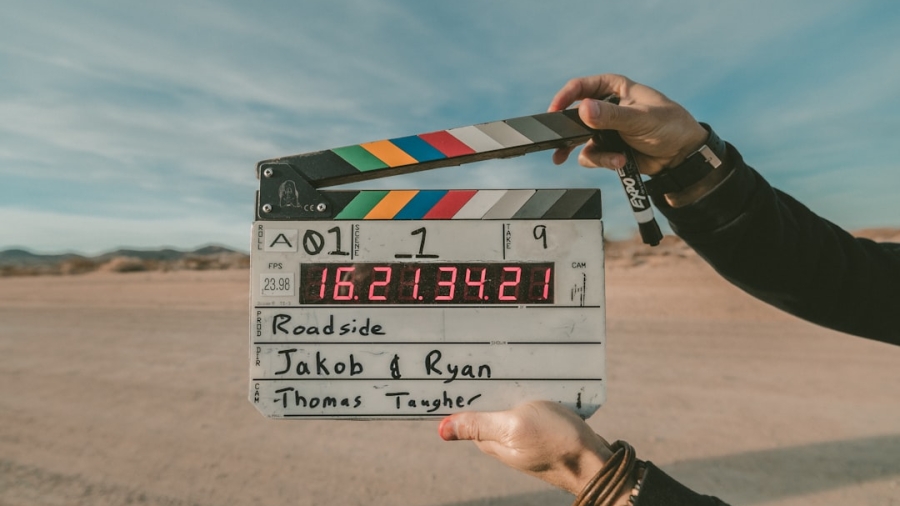In recent years, the emergence of deepfake technology has sparked significant debate and concern across various sectors, including media, politics, and personal privacy. Deepfake videos, which utilize artificial intelligence to create hyper-realistic alterations of video content, have the potential to mislead viewers by presenting fabricated scenarios as genuine. This technology allows for the manipulation of audio and visual elements, enabling the creation of videos where individuals appear to say or do things they never actually did.
The implications of such technology are profound, raising questions about trust, authenticity, and the very nature of reality in an increasingly digital world. The term “deepfake” itself is a portmanteau of “deep learning” and “fake,” highlighting the sophisticated algorithms that underpin this technology. As deepfake videos become more prevalent, they challenge our ability to discern fact from fiction.
While some may view deepfakes as a novel form of entertainment or artistic expression, others warn of their potential for misuse, particularly in spreading misinformation or damaging reputations. As society grapples with these challenges, understanding the mechanics of deepfakes and their broader implications becomes essential for navigating an era where visual evidence can no longer be taken at face value.
Key Takeaways
- Deepfake videos use artificial intelligence to manipulate or replace a person’s likeness in a video, often creating realistic but fake content.
- The technology behind deepfakes involves machine learning algorithms that analyze and manipulate large datasets of images and videos to create convincing fake videos.
- Signs of a deepfake video include unnatural facial expressions, inconsistent lighting and shadows, and strange or mismatched audio.
- Deepfake videos can be harmful by spreading misinformation, damaging reputations, and even inciting violence or unrest.
- Tips for spotting deepfake videos include verifying the original source, examining the video for inconsistencies, and using fact-checking tools and resources.
Understanding the Technology Behind Deepfakes
Understanding Deepfake Technology
Deepfake technology relies on a subset of artificial intelligence called deep learning, which involves training neural networks on vast datasets to recognize patterns and generate new content. This process typically begins with a large collection of images and videos of a target individual, which are fed into a machine learning model. The model learns to replicate the target’s facial expressions, voice, and mannerisms, allowing it to generate new video content that convincingly mimics the individual.
The Sophistication of Deepfake Algorithms
The sophistication of these algorithms has advanced rapidly, making it increasingly difficult for the average viewer to distinguish between authentic footage and manipulated content. Deepfake creation often employs techniques such as Generative Adversarial Networks (GANs), where two neural networks compete against each other: one generates fake content while the other evaluates its authenticity. This iterative process continues until the generated content is indistinguishable from real footage.
Enhancing Realism and Raising Ethical Concerns
Advancements in computer graphics and image processing have further enhanced the realism of deepfakes. As a result, even trained professionals may struggle to identify manipulated videos without specialized tools. The rapid evolution of this technology raises critical ethical questions about its use and the potential consequences for individuals and society at large.
Signs of a Deepfake Video

Identifying deepfake videos can be challenging due to their increasing sophistication; however, there are several telltale signs that can help viewers discern authenticity. One common indicator is inconsistency in facial movements or expressions. In many deepfakes, the subject’s lips may not sync perfectly with their speech, leading to a disjointed viewing experience.
Additionally, subtle discrepancies in eye movement or blinking patterns can reveal manipulation, as AI-generated faces may struggle to replicate natural human behavior accurately. Observing these nuances can provide valuable clues about the video’s authenticity. Another sign to watch for is unnatural lighting or shadows on the subject’s face.
Deepfake technology often struggles to match lighting conditions accurately, resulting in a dissonance between the subject and their surroundings. Furthermore, backgrounds may appear blurred or distorted in ways that do not align with the rest of the scene. Viewers should also be cautious of videos that evoke strong emotional reactions or sensational claims without credible sources.
In an age where misinformation spreads rapidly, being vigilant about these signs can help individuals navigate the complex landscape of digital media more effectively.
How Deepfake Videos Can Be Harmful
The potential harm caused by deepfake videos extends far beyond mere deception; it can have serious implications for individuals’ reputations and societal trust. One of the most alarming uses of deepfake technology is in the realm of non-consensual pornography, where individuals’ faces are superimposed onto explicit content without their consent. This violation not only inflicts emotional distress on victims but can also lead to long-lasting damage to their personal and professional lives.
The ease with which such content can be created and disseminated poses significant challenges for legal systems that struggle to keep pace with technological advancements. Moreover, deepfakes can undermine public trust in media and institutions by blurring the lines between reality and fabrication. In political contexts, manipulated videos can be weaponized to spread misinformation or discredit opponents, potentially influencing elections and public opinion.
The proliferation of deepfakes may lead to a general skepticism toward all video content, making it increasingly difficult for people to discern credible information from falsehoods. As society grapples with these challenges, it becomes crucial to foster media literacy and critical thinking skills to mitigate the risks associated with deepfake technology.
Tips for Spotting Deepfake Videos
To effectively spot deepfake videos, viewers should adopt a multi-faceted approach that combines critical observation with technological awareness. First and foremost, it is essential to scrutinize the source of the video. Established news organizations and reputable platforms are more likely to provide accurate content than unknown or dubious sources.
Checking for corroborating reports from multiple outlets can also help verify the authenticity of a video before sharing it further. Additionally, viewers should be wary of sensational headlines or emotionally charged narratives that may accompany deepfake videos, as these tactics are often employed to manipulate audience reactions. Another practical tip is to pay close attention to audio quality and synchronization.
In many cases, deepfake technology struggles to produce realistic audio that matches facial movements seamlessly. If a video features awkward pauses or mismatched audio-visual cues, it may be an indication of manipulation. Furthermore, utilizing reverse image searches can help identify whether a video has been altered or taken out of context.
By employing these strategies and remaining vigilant about potential red flags, individuals can better protect themselves from falling victim to misleading deepfake content.
Steps to Take if You Encounter a Deepfake Video

Verifying the Authenticity of a Video
If you suspect that you have encountered a deepfake video, it is crucial to approach the situation thoughtfully and responsibly. The first step is to refrain from sharing the video until you have verified its authenticity. Spreading potentially false information can exacerbate the problem and contribute to misinformation in your social circles.
Investigating the Video’s Legitimacy
Instead, take time to analyze the video using various methods. Scrutinize its source, examine visual and audio cues, and seek corroborating evidence from reliable outlets. If you determine that a video is indeed a deepfake or if you are uncertain about its authenticity, consider reporting it to relevant platforms or authorities. Many social media sites have mechanisms in place for reporting misleading content, which can help mitigate its spread.
Spreading Awareness and Promoting Critical Thinking
Additionally, engaging in discussions about deepfakes with friends and family can raise awareness about this issue and promote critical thinking regarding digital media consumption. By taking these proactive steps, individuals can contribute to a more informed society that is better equipped to navigate the complexities of modern technology.
Tools and Resources for Detecting Deepfakes
As deepfake technology continues to evolve, so too do the tools designed to detect manipulated content. Several organizations and researchers have developed software solutions aimed at identifying deepfakes through various methods. For instance, platforms like Deepware Scanner and Sensity AI utilize advanced algorithms to analyze videos for signs of manipulation, providing users with insights into their authenticity.
These tools often employ machine learning techniques similar to those used in creating deepfakes but focus on detecting inconsistencies rather than generating content. In addition to software solutions, educational resources are available to help individuals understand deepfakes better and learn how to spot them effectively. Websites like Media Literacy Now offer guides on recognizing misinformation and understanding digital media’s impact on society.
Furthermore, academic institutions are increasingly incorporating discussions about deepfakes into their curricula, fostering critical thinking skills among students who will navigate an increasingly complex media landscape in their future careers. By leveraging these tools and resources, individuals can enhance their ability to discern fact from fiction in an era dominated by digital manipulation.
Conclusion and Final Thoughts
The rise of deepfake technology presents both exciting possibilities and significant challenges for society as a whole. While it offers innovative avenues for creativity and entertainment, it also poses serious risks related to misinformation, privacy violations, and erosion of trust in media. As we move forward in this digital age, it is imperative that individuals cultivate critical thinking skills and remain vigilant about the content they consume and share online.
By understanding how deepfakes work and recognizing their potential harms, we can better equip ourselves to navigate this complex landscape. Ultimately, fostering a culture of media literacy is essential for mitigating the risks associated with deepfakes and ensuring that technology serves as a tool for empowerment rather than deception. As we continue to grapple with these issues, collaboration among technologists, educators, policymakers, and the public will be crucial in developing effective strategies for addressing the challenges posed by deepfake technology.
By working together, we can strive toward a future where digital content is both innovative and trustworthy—preserving our ability to discern truth in an increasingly manipulated world.
If you’re concerned about deepfake videos and their implications, it’s also crucial to understand the hardware that can potentially create such content. For those interested in video editing, whether for creating or detecting manipulated content, choosing the right laptop is essential. You can learn more about selecting the best laptop for video editing, which could indirectly help in managing and editing videos to spot deepfakes, by reading this related article: How to Choose a Laptop for Video Editing. This guide provides valuable insights into the specifications required for handling sophisticated video tasks, which is a step towards understanding and combating deepfake technology.
FAQs
What are deepfake videos?
Deepfake videos are manipulated or synthesized videos created using artificial intelligence and machine learning techniques. These videos often superimpose the face and voice of one person onto another person’s body, creating a realistic but fake video.
How can you spot a deepfake video?
There are several signs that can help you spot a deepfake video, including unnatural facial expressions or movements, mismatched lip-syncing, and inconsistencies in lighting or background. Additionally, if the video features a public figure or celebrity in a compromising or controversial situation, it’s important to verify the authenticity of the video.
What are the potential risks of deepfake videos?
Deepfake videos have the potential to spread misinformation, manipulate public opinion, and damage the reputation of individuals or organizations. They can also be used for malicious purposes such as fraud, blackmail, or harassment.
How can you avoid falling for deepfake videos?
To avoid falling for deepfake videos, it’s important to verify the source of the video and look for any signs of manipulation. You can also use fact-checking websites and tools to verify the authenticity of the video. Additionally, being cautious about sharing or spreading unverified videos can help prevent the spread of deepfake content.
What are some tools or technologies that can help detect deepfake videos?
There are various tools and technologies being developed to detect deepfake videos, including deepfake detection algorithms, blockchain-based authentication systems, and digital watermarks. Additionally, some social media platforms and video hosting websites are implementing measures to detect and flag potential deepfake content.

